Monte Hwangmaesan (황매산)
.0M 2023-05-04
Hwangmaesan-ro 1202-beongil, Chahwang-myeon, Sancheong-gun, Gyeongsangnam-do
Festival de las Azaleas Reales del Monte Hwangmaesan (황매산철쭉제)
1.4Km 2025-04-04
Hwangmaesangongwon-gil 331, Gahoe-myeon, Hapcheon-gun, Gyeongsangnam-do
055-930-4769
El Festival de las Azaleas Reales del Monte Hwangmaesan se celebra anualmente en el Parque Municipal del Monte Hwangmaesan. Este parque incluye el Mosanjae, conocido por ser el mejor camino para hacer excursiones de la nación con los campos más grandes de azaleas; también está el Yeongamsaji (zona del templo Yeonamsa), que se encuentra rodeado por prominentes rocas talladas. En términos de distritos administrativos, el monte Hwangmaesan se extiende a través de los pueblos de Dunnae-ri y Jungchon-ri del municipio de Gahoe-myeon, y de los pueblos Hageum-ri y Hoeyang-ri del municipio de Daebyeong-myeon. Hwangmaesan fue designado como parque municipal el 18 de noviembre de 1983. La montaña ofrece un gran paisaje durante todo el año: en primavera, las flores de azalea cubren los prados interminables; en verano, los visitantes pueden disfrutar de los frondosos y refrescantes valles; en otoño, la montaña se llena de hojas color carmesí; y, en invierno, el viento frío se arremolina alrededor de los picos cubiertos de nieve.
Parque Temático Cinematográfico de Hapcheon (합천 영상테마파크)
11.4Km 2025-08-25
Hapcheonhosu-ro 757, Yongju-myeon, Hapcheon-gun, Gyeongsangnam-do
Sancheongyulsuwon / 산청율수원
12.6Km 2025-08-12
36, Sindeunggahoe-ro Sindeung-myeon, Sancheong-gun, Gyeongsangnam-do
+82-55-974-0221, +82-10-9802-1132
Sancheong Yulsuwon was opened in October 2013 as traditional hanok accommodations to provide guests comfort and relaxation in nature. It was named after the expression from “Decade of Wen Wang” of the Classics of Poetry (the oldest existing collection of Chinese poetry), meaning “Following the virtue of ancestors, one should cultivate one’s mind,” in the hope that guests can experience traditional Korean culture in hanok and learn common themes and cultivate virtues in life. Located at the hanok street in Sancheong County, Gyeongsangnam-do Province, Sancheong Yulsuwon is a hanok stay facility established by Korea’s major education company JEI Corporation. It was built by expanding and renovating the Old House of Suncheon Park’s Clan for over four years. It is not only a hanok cultural facility but also an educational facility that aims to provide visitors comfortable relaxation and to establish a sound, rich environment of educational culture, which is also the philosophy of JEI Corporation. It is located around the Dumulmeori area where Dangyecheon Stream and Sindeungcheon Stream -- the water branch of Hwangmaesan Mountain (1,108m above sea level) -- meet. The area is known for many houses of noble families situated in a propitious site combined with mountains and water and as a hanok village with the old stone wall, which was designated as a cultural heritage. Among them, Sancheong Yulsuwon is an outstanding hanok structure built on a total area of about 2,975m2 according to the theory of divination based on topography.
Entering the main gate Yeongsumun, one sees the Anchae (inner house) situated in front, the outer Sarangchae (detached building) on the right, and the bathroom on the left. Then, there are the inner Sarangchae, the kitchen, and the pavilion around the vegetable garden and the pond. The arrangement of buildings has special meaning: the kitchen signifies a green dragon (east), the bathroom, a white tiger (west), the inner Sarangchae, an Ansan (a low and small mountain in front of the house), and the outer Sarangchae and the main gate, a Josan (a high mountain behind Ansan); these five buildings seem to embrace the Anchae. As for the special names of the buildings, the inner Sarangchae built with the splendid style of semi-hipped roof and double eaves was named “Nongam,” meaning “a thatched cottage of a skilled farmer”; the outer Sarangchae was named “Goheon,” meaning “an old sarangchae,” and the Anchae -- named “Hagyejae” meaning “modesty” -- is situated in the innermost area. In particular, its upper floor (numaru) offers an open view of the environment. The bathroom, which was named “Seoljodang” meaning “one should keep the mind and body clean,” is composed of two connected houses. It is also equipped with red clay sauna and jjimjilbang (Korean dry sauna).
Sancheong Yulsuwon was built based on a traditional hanok style of the Yeongnam area, with a splendid Seoul style of modernity added to the design. The sunshine comes through the windows made of hanji (Korean paper) in the clean and cozy rooms. Guests can also enjoy the outside view from the windows, which show the typical scenery of hanok consisting of jars, trees, flowers, and low stone wall with tiled roof. Every room is equipped with a bathroom including a bathtub and a modern-style kitchen. Sancheong Yulsuwon is adjacent to various tourist attractions including the following: valley of Daewonsa Temple surrounded by Geumgang pine trees; Namsa Yedamchon village, a village with an old wall made of red clay and stones; and Jeongchiwam Hermitage, Traditional Buddhist Temple No. 83 built by Silla’s Buddhist monk Uisang (625-702) and where the Buddhist Painting of Mountain Spirit can be found.
Valle Seonyudong en Sancheong (선유동계곡(산청))
13.0Km 2022-08-05
Suwol-ro, Sinan-myeon, Sancheong-gun, Gyeongsangnam-do.
Seonyudong (선유동, 仙遊洞) significa "lugar donde bajan a jugar las ninfas del cielo". Se decía que las ninfas bajaban frecuentemente a este valle, a preparar licor y guardarlo en frascos. Algunos hoyos dejados en las rocas sugieren que podría haber algo de verdad en la leyenda. Cerca del Valle Seonyudong, se dice que los pinos y bambús mantienen verdes sus hojas todo el año, y que las ninfas bajan a jugar aquí, bajo la cascada Suwol de la aldea Suwol.
Aldea Donguibogam en Sancheong (산청 동의보감촌)
13.6Km 2023-11-15
Donguibogam-ro 555-beongil 61, Sancheong-gun, Gyeongsangnam-do
Templo Yeonhosa (연호사)
19.2Km 2021-03-03
Jukjuk-gil 80, Hapcheon-eup, Hapcheon-gun, Gyeongsangnam-do
+82-55-931-2508
El templo Yeonhosa se ubica en Gyeongsangnam-do y por detrás se visualiza el majestuoso monte Hwangusan. Las leyendas locales cuentan que este recinto budista fue construido para consolar el espíritu de los soldados caídos del reino de Silla.
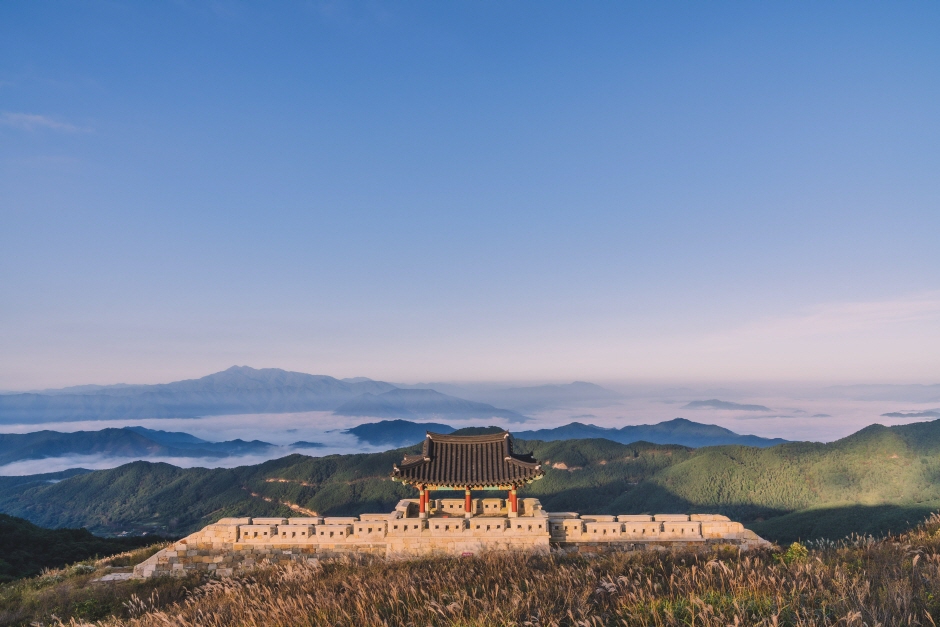
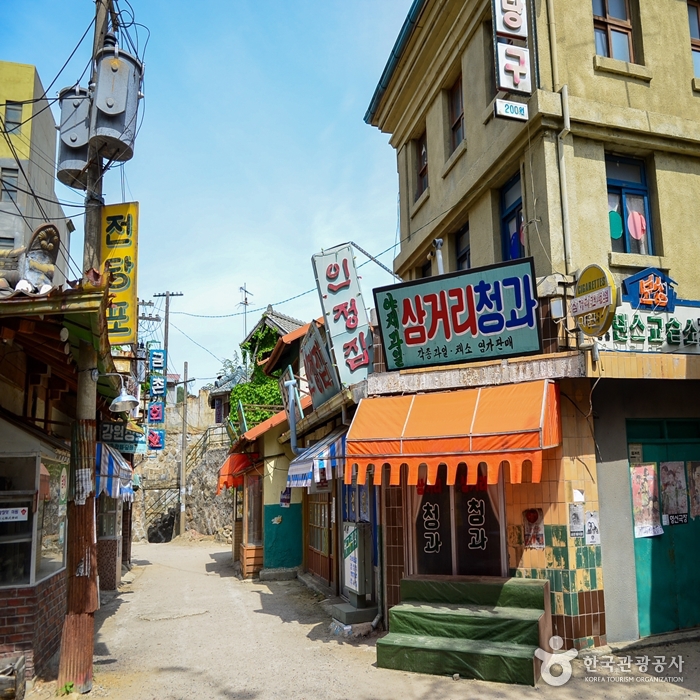
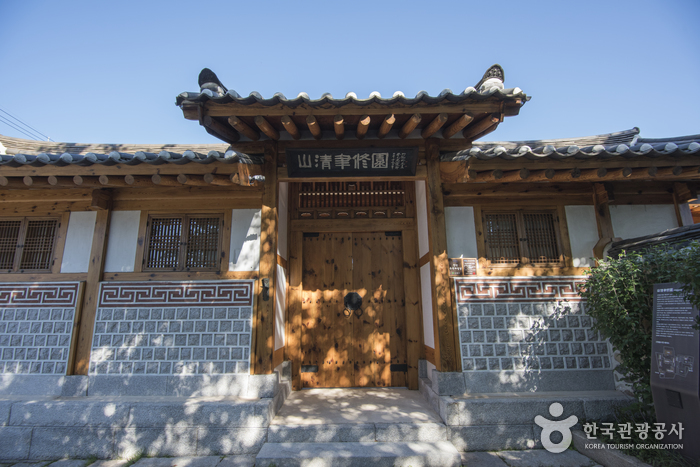
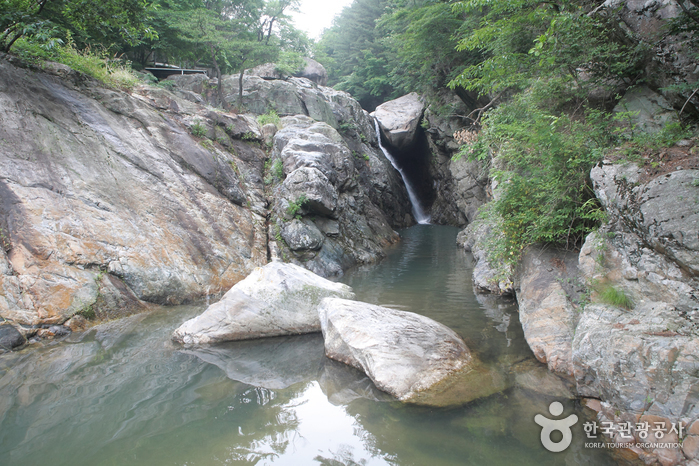
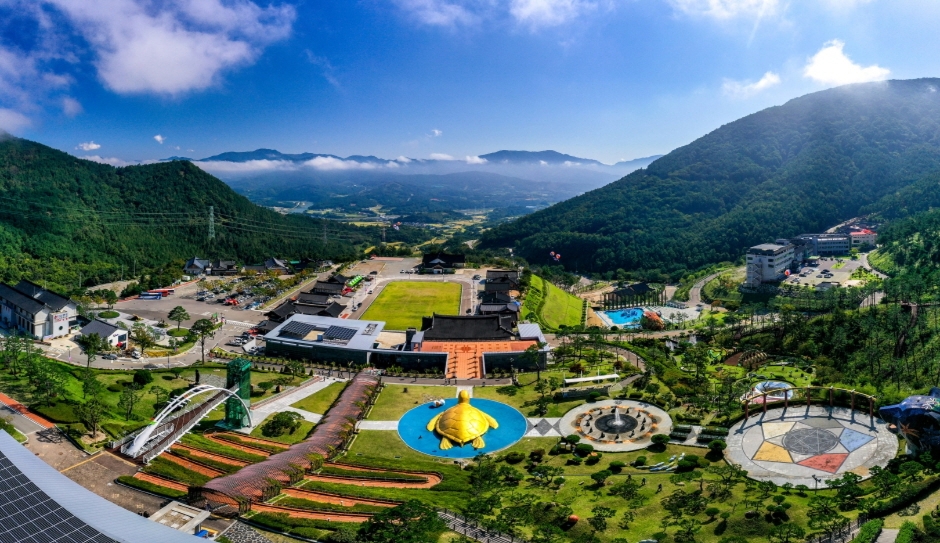

 Español
Español
 한국어
한국어 English
English 日本語
日本語 中文(简体)
中文(简体) Deutsch
Deutsch Français
Français Русский
Русский